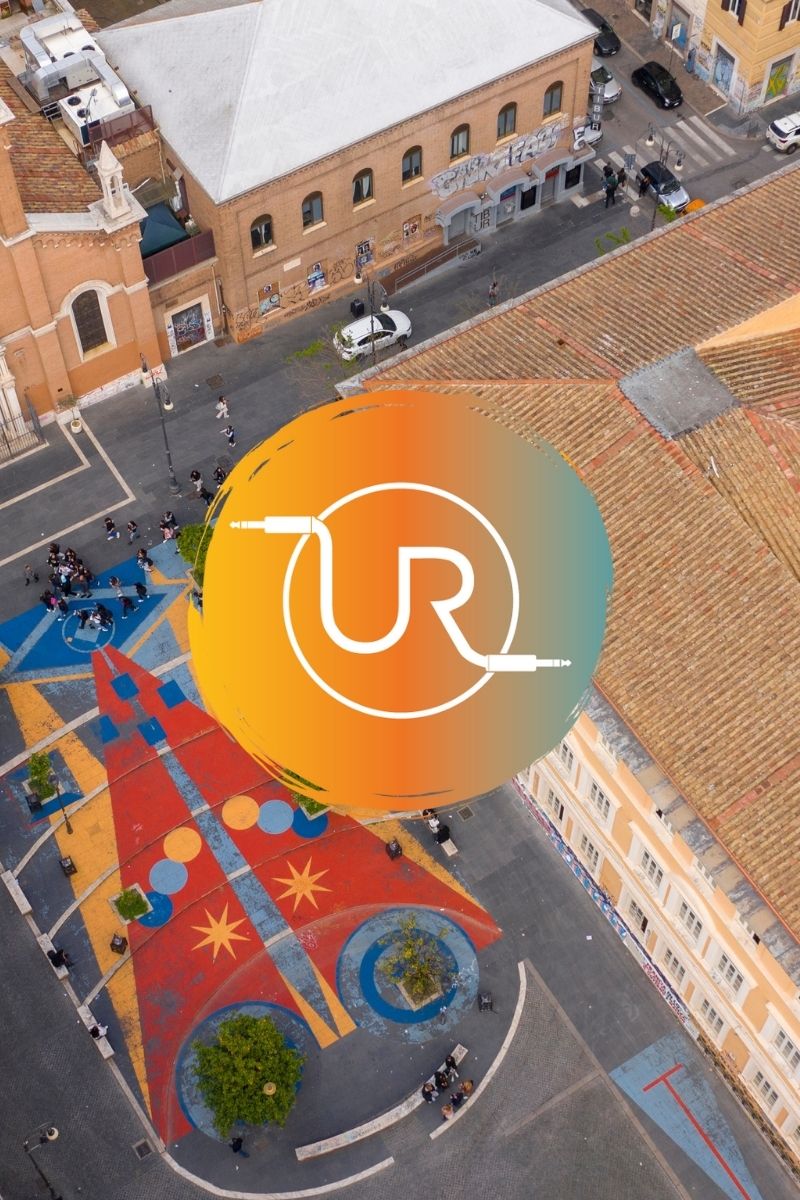
When visiting Rome, it is important to remember that the magic of the city is not only the ancient buildings, monuments and squares, but also the traditional flavors you will encounter in the streets and characteristic neighborhoods.
Although most of us think of pizza and pasta when we think of Italian cuisine, you can get a deeper understanding of the gastronomic and cultural richness of the city thanks to Rome’s street delicacies, each of which carries a different story.
In this article, we will take you on a virtual journey through four of Rome’s street delicacies:
-
Supplì: Rome’s Legendary Roast
One of the most famous foods sold on the streets of Rome supplì’The origin of the word “surprise” comes from the French word “surprise”.
According to legend, a French soldier wandering the streets of Rome, while eating this freshly fried rice ball, described the hidden mozzarella cheese inside as an unexpected “surprise” and expressed his surprise.
This word, which has been corrupted over time, has entered Italian “supplì” as “supplì”, and it has become established in this way.Supplì It was first sold by street vendors at Rome’s neighborhood festivals, fairs, markets and square corners, and was not included in any official menu.
It was first served in 1874 in a restaurant called “Trattoria della Lepre”. “soplis di riso” The first official recipe was written by Ada Boni in 1929 and published in her book La Cucina Romana (Roman Cuisine).
In this book, which was written to preserve the traditional Roman culinary culture that was slowly disappearing at that time, Ada Boni, supplì‘s meatless sauce “sugo finto” (pseudo-meat sauce) and chicken offal as a filling (in Roman cuisine “regaglie” as the “meat”), mushrooms or stewed meat can also be used.SupplìThroughout its nearly 200-year history, this delicious roast has become a staple of Roman cuisine, appearing on the menu of almost every pizzeria in the city.
Today it is prepared with many different ingredients. supplìone of the most classic varieties of supplì al telefonoin the, in the mozzarella It is so named because the cheese, after being bitten or split by hand, stretches between the two pieces, reminding one of old-time telephones.
-
Grattachecca: A Refreshing Break
Grattacheccais a preferred street dessert to cool off during the hot summer months in Rome.
In its name “gratta” is Italian for “to scrape”.
Indeed, this dessert is made by adding various flavors to large blocks of ice scraped by hand. “Checca” is the Roman dialect name for the large blocks of ice used to keep food cold when refrigerators were not yet available.Grattachecca‘s origins date back to the 19th century.
century.
It is known that the peddlers who made this dessert in Rome at that time sold the thin ice particles they obtained by scraping large blocks of ice by flavoring them with fresh fruit syrups.
At a time when there were no ice machines, this refreshing dessert, prepared with natural methods, quickly became popular among the Romans, especially during the hot summer months.
Today, it continues to be an indispensable flavor for both Roman people and tourists. grattacheccaIt is served in carts or kiosks, especially on the banks of the Tiber River, flavored with fresh fruit syrups such as lemon, strawberry, orange or cherry.
-
Trapizzino: A Modern Street Taste
TrapizzinoTramezzino is a relatively late addition to Rome’s street food scene and was created by Stefano Callegari in 2008.
Its name, a combination of the words “pizza” and “tramezzino”, evokes both the traditional pizza dough and the classic triangular Italian sandwiches.
Born from the principle of presenting traditional Roman food in a portable and easy-to-consume form trapizzino the yeast pizza dough is cut into triangles and filled with the most popular dishes of Roman cuisine.
For example, ” Pollo alla cacciatora” (hunter style chicken), “trippa alla romana” (Roman tripe) or “melanzane alla parmigiana” (eggplant parmigiana), “polpette al sugo” (Traditional Roman dishes such as meatballs in tomato sauce are among the most popular alternatives.TrapizzinoIt has quickly become popular not only among Romans and visitors to the city, but also in other cities in Italy and around the world.
This creative and delicious snack perfectly reflects the richness and innovation of Roman cuisine.
-
Ciriola: Favorite Bread from Ancient Rome to Today
CiriolaCiriola is one of the traditional breads of Rome and has been consumed since the Roman Empire. Ciriola There are two different theories about its name.
Some say it was named because of its shape “ciriola” small eels called eels, while another hypothesis is that this bread is used in Latin to describe its yellowish color, reminiscent of beeswax. “cereola” (candle) or “cereŏlus” (candle-colored) words are used. A simple, delicious and filling bread ciriolaThanks to its hard crust and soft interior, it is the perfect ingredient for sandwiches, especially when stuffed with various ingredients.
This bread is used for every meal from breakfast to dinner among the Romans, and is often preferred by street vendors.
The older generations in Rome especially like to serve this bread on their tables. “scarpetta” (scraping the sauce left on the plate with bread).
It is also a hearty and practical lunch option for workers. ciriolaDuring the Second World War, it played an important role in the distribution of aid, especially by the state, as a simple but filling foodstuff that quickly gives a feeling of satiety.
Rome’s Past and Present Together on the Palate
Rome’s street food is an indispensable part of the city’s historical and cultural fabric. Supplì‘s French-origin name recalls the occupations of Rome in the recent past, grattachecca‘s story reveals the creative solutions of the Romans on hot summer days. Trapizzinowhile bringing a modern interpretation to traditional Roman cuisine, ciriola symbolizes a tradition that has been carried from antiquity to the present day.
During your trip to Rome, you should not leave the city without trying these four delicacies.
Our routes are designed to allow you to taste these street delicacies in characteristic neighborhoods and historical points of sale during short breaks.
In this way, you will not only visit Rome but also discover its soul; you will experience street flavors accompanied by the stories of their neighborhoods in places that are historical food stops.







Leave a comment: